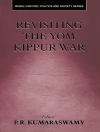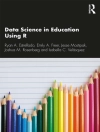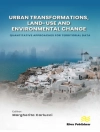Struggling to get to grips with a new technique? Need some guidance on how to analyse metallic elements? Pitfalls, common errors and useful hints and tips are all discovered in this new book.
Atomic spectrometry techniques are used to determine the metallic elements, as well as metalloids and non-metals. Providing methods of sample collection, sample preparation and analytical methodology, the book explores several techniques including flame and electrothermal atomic absorption spectrometry (FAAS and ETAAS), inductively coupled plasma–optical emission spectrometry (ICP–OES), inductively coupled plasma–mass spectrometry (ICP–MS), and more. In addition to these, the sections on sample collection and sample preparation methods are valuable for those practising or revising techniques. It provides a precious source of theoretical and practical information for those who are new to the techniques or working in laboratories with little access to in-house expertise.
Unlike some books that are suitable for undergraduate students, this text provides hints, tips and methodology for users of the techniques. It is an accessible reference which can be read in parts or as a whole and is written to appeal to researchers, industrial scientists and technicians working in this field.
Jadual kandungan
- Sample Collection Methods
- Sampling Preparation Methods
- X-ray Fluorescence Spectrometry
- Atomic Absorption Spectrometry (AAS)
- Inductively Coupled Plasma–Optical Emission Spectrometry (ICP–OES)
- Inductively Coupled Plasma–Mass Spectrometry (ICP–MS)
- Laser Induced Breakdown Spectrometry
- Vapour Generation and Atomic Fluorescence Spectrometry (AFS)
- Which Technique to Use?
Mengenai Pengarang
Andy Fisher attended Plymouth Polytechnic (now the University of Plymouth) as an undergraduate between 1984 and 1987. On graduating he undertook his Ph D studies at the same institute under the supervision of Prof. Les Ebdon and Prof. Steve Hill. On completing his Ph D in 1991 he remained in Plymouth, completing several post-doctoral fellowships and becoming a research technician. He spent nearly 30 years teaching undergraduates and training postgraduates in the use of analytical techniques including FAAS, ETAAS, ICP-OES, ICP-MS along with the associated sample preparation protocols. In recent years he has also moved into analysis using XRF and portable XRF. In addition to his teaching duties, he has also undertaken consultancy work requiring inorganic analysis and participated in numerous inter-laboratory comparison/certification exercises.












